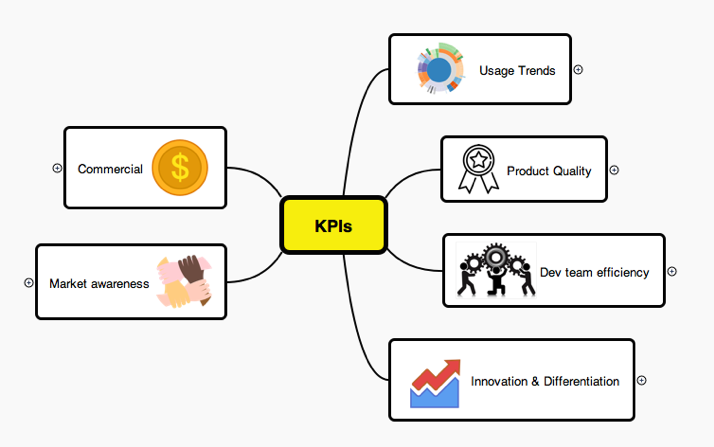Metric-Driven Decisions: KPIs and Dashboards for Product Managers
Solid KPIs and metrics are crucial informative decision-making factors that every product manager should evaluate carefully.
Join the DZone community and get the full member experience.
Join For FreeIntroduction
Informed product managers make better decisions and achieve better outcomes. Data based on KPIs helps product managers align the teams with strong evidence to their strategy. As a PM, KPIs can either confirm your conviction in what you believe is the right strategy, or will correct your thinking.
In this post we’ll cover the following:
Deciding which KPIs are Leading KPIs and which are Trailing KPIs
30 different business or product-oriented KPIs
Generating KPIs and presenting those in an action-driving manner
It's a long topic, so we'll split it into two. The first piece will discuss defining and selecting KPIs (leading, trailing). We will present different KPI categories: commercial, technical and team-oriented. The second post will dive into the KPIs and dashboards, and will end with an example.
Considering KPIs
KPIs Change with Product Maturity
There's an endless list of KPIs; you cannot track all of them. On the contrary, you need to focus on those most meaningful to the success of your product/portfolio. Impactful/guiding KPIs are different, depending on product maturity, company strategy, as well as your position within the team.

Impactful KPIs, based on product maturity
Here are a couple of examples.
At the introduction stage, it is all about proving the value hypothesis. New customer acquisition and early usage indicators are good leading indicators. Operational cost-related KPIs could be categorized as trailing for the time being.
Products at growth stage are likely better measured by KPIs related to scalability, quality, new logo acquisition cost, etc.
For a mature product, certainly value realization, churn, and cost of delivery KPIs would be of interest. Also recommended is a measurement of innovation rate and differentiation to ensure product longevity. Otherwise, you may find this product on the path to decline and the eventual end of life.
Leading vs. Trailing KPIs
Not only do you need to decide which KPIs are most meaningful for your decisions, it is recommended to prioritize those into "Leading" and "Trailing." A key consideration is the intuitive perception of "success" of your product: are you achieving your goals?
Another metric to consider is your ability to impact or operate based on those metrics. Compare COGS (Cost of Goods Sold) with the number of customers. The number of customers might be the primary concern at the introduction phase. At the growth phase you need to consider COGS and margin very closely because if you aren't making the numbers, you are now going to explode this non-working equation at scale. The number of customers is a KPI you can fairly easily control (give it for free, that will get people's attention). COGS is something that's much harder to control and improve.
Naturally, there are more considerations, but let's move on.
Taking KPI-Driven Decisions: Openness & Consistency
Remember that KPIs are your tool to help you understand the product and market dynamics and take decisions. Enjoy the confirmation of your decisions, but be open to correct a mistake, as the data usually doesn't lie. Try to convert the leading KPIs into a set of course corrections or improvements you need to take; you can always do better. Try to make the process as logical (NOT emotional) as possible, so it's easily explained to others (try it!), and repeatable. Ensure your decisions are consistent: take a look at data from a few weeks ago and ask yourself if you would have made the same decision. And lastly, set a cadence for your review: don't make it anecdotal, continuous or a task to dread. It's much like a sprint meeting; make it recurring, short and concise. On your calendar, no excuses.
KPIs
The following is the beginning of the discussion on KPIs. At this level, I will only describe categories (as this post is already long enough). In the next post, we'll dive in.

KPI categories for the product manager
I count 6 categories. Naturally, you may have others, but this is my logic:
Usage trends and product quality: This gives you perspective on what the customer is going through. They are first intentionally: you can be successful commercially or have the best innovative product. Your product lives and dies on value delivery (which shows in usage), reliability and ease of use (product quality). Every product manager should be on top of these.
Dev team efficiency and innovation/differentiation: I see these as ongoing levers Sometimes you push the pedal to the metal and accept technical debt. You drive innovation and differentiation. Sometimes you need to step back and really help your customers be successful, or get ready to scale. You need to know your competitive window and when can you make these internal investments.
Commercial: Admittedly, not all product managers are asked to own this category. It's not always possible if there is no SKU that separates the numbers. As a product manager myself, I would struggle to get complete insight without these figures, because that's how I impact the business. Even if you do not use these today, I highly recommend considering adding commercial analysis to your skill set for future growth.
Market awareness: Naturally, you want the market talking about your product. If they don't, you have a problem.
In the Next Post..
We will go over the list of KPIs. I will provide an example from my world of leading and trailing KPIs and how those help me understand the real state of my product.
Hope this is useful, looking forward to your feedback!
Opinions expressed by DZone contributors are their own.

Comments